I first started thinking about flying in Nepal three years ago or so. It seemed like a good way to see one of the prime climbing destinations from a different perspective. After a tiny bit of research I put it on the back burner. The flying looked challenging and fun but it appeared that you had to be a Nepalese national to get a position with a local airline.
Then last December I got wind of two Caravans that needed to be delivered to Kathmandu. Not eager to tackle all the paperwork, I gave my friend Alex Haynes a call. Alex has been delivering planes since the 90’s and has a much better grasp on the legwork required. He had been to Nepal before but liked the idea of these Caravans. They were being sold by Seattle-based Kenmore Air Harbor. Kenmore is a legendary floatplane operation that also has a land plane commuter component. Alex lives in Seattle and the opportunity to work with a local company, especially one with a reputation as good as Kenmore’s, dispelled any doubts about the condition of the aircraft.
Next he contacted the folks at Goma Air and put a bid in for the ferry contract. Goma Air is a new Nepalese airline headquartered in Kathmandu. They are owned by a mix of pilots and business people. Most of the pilots had been flying throughout Nepal and India for years and had oodles of hours in Twin Otters. Kenmore was also contracted to give the pilots training in Seattle as part of the aircraft sale. This was great because Alex and I had a chance to meet most of the staff before we started the flight (usually with deliveries you don’t meet the customer until you arrive with the plane).
At some point in a conversation with Goma Air’s Managing Director, Manaj Karki, the need for an Instructor Pilot in Nepal came up. Kenmore was supervising all the initial training, but the Civil Aviation Authority of Nepal (CAAN) requires 50 hours of instruction on representative routes. This is much the same as the FAR for Initial Operating Experience (IOE) that is mandatory for scheduled Part 135 and 121 operators in the U.S., except the FAR’s only mandate 10-15 hours! Manaj asked if I would be interested in staying in Nepal as an instructor pilot for the 50 hours.
A chance to fly around in the Himalayas and stare at 8,000 meter peaks? Hell yes, I was interested! I quickly juggled things around to free up the time. Then there were the negotiations about the time commitment, money etc. In the end we worked it all out and I packed my bags for an extended stay.
After several delays (common in the delivery business) Alex and I finally met up at Renton Airport for an early morning departure.
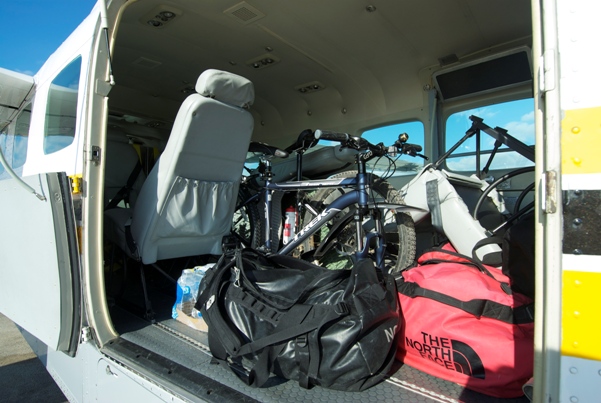
Lots of junk to bring along. (This photo was actually taken in Malta, but makes more sense here.)
The weather all across the US was fantastic. Clear and cold with tailwinds. As a ferry pilot you couldn’t ask for better. Good thing too, as we were planning on making Bangor Maine that night. After three fuel stops and 12.5 hours of uneventful flying, we arrived in Bangor at 0100 local.
Waking up late the next day was nice luxury. Alex had planned a 2-3 day break as ferry tanks (two 200 gallon aluminum tanks in the cabin) were installed in the planes, and final permits were issued. The most important task was to de-register the planes in the U.S. and have them re-registered as Nepalese. Luckily for me Alex was in charge of all these details, and I got to go running and lounge around while he took care of the small print. Ah yes, it’s good to be just the pilot!
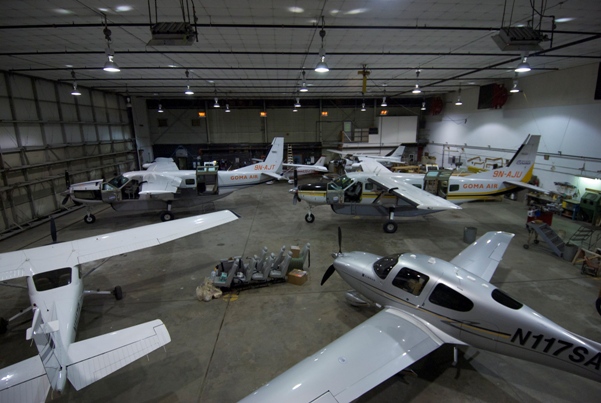
Tanking in Bangor, Maine. We also peeled the N numbers off, leaving the new Nepalese registration.

The tanks: two 200 gallon tanks behind the pilot's seat.
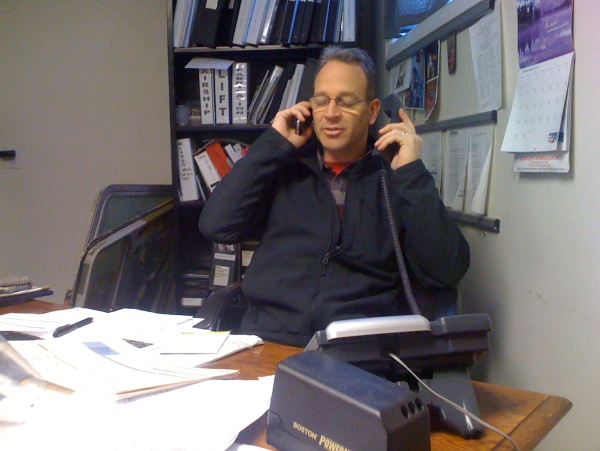
Paperwork and permits! Alex straightens it all out while I'm off to the hotel for a relaxing afternoon.
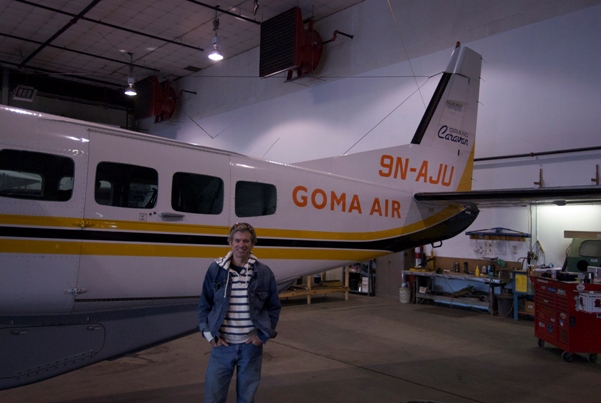
My plane for the trip, with its new tail number.
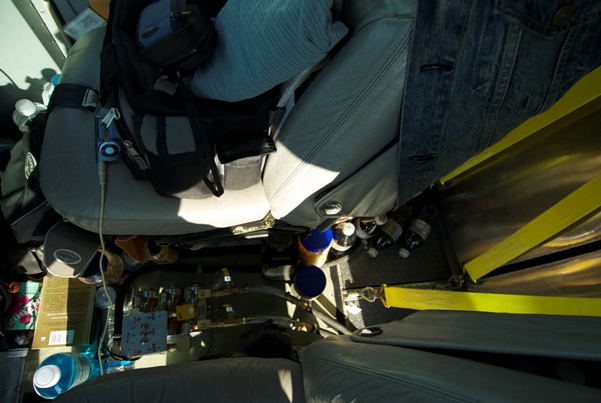
My office, with fuel pumps for the internal tanks and food stashed between the seats.
Amazingly enough everything went like clockwork, although Alex may have gained some more gray hairs. We had four stops planned on the way to Kathmandu: Santa Maria Portugal (Azores Islands) for a short rest, then onto the Mediterranean Island of Malta. A quick turn in Malta, and off to Luxor, Egypt for a night arrival. A short overnight break, then a day flight to Oman. In Oman we planned a full day’s rest to get all the permits lined up for the final leg to Nepal.
Most of the flight would be a milk run but we were keeping a watchful eye on the Mid East, Egypt in particular. The unrest was in full swing in Cairo, and if it spread down to Luxor we might be forced to take a different route. A new route would mean additional expense and time. Any change in fuel prices or paying for additional permits could easily turn the flight into a financial disaster!
Finally late on Friday afternoon we fired up the turbines and rolled down the Bangor runway heading across 2,000 miles of cold Atlantic water towards the Azores. As planned the flight went smoothly, and after a short dogleg to the south (we lacked a Canadian overflight permit and the forecast winds allowed for the detour) we turned east. After 12 hours spent staring at the stars and trying to stay awake we landed just after dawn in Santa Maria.
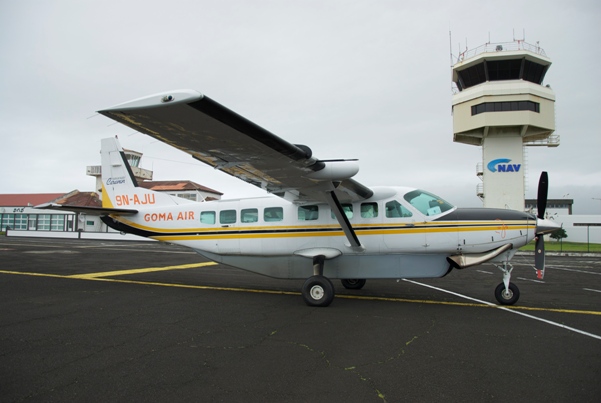
Arrival in Santa Maria, Azores: 10.2 hours and 2,000 miles from Bangor.
Standard stop. Fuel, eat, sleep. The only surprise was when Malta denied our Nepalese-registered planes a landing permit. Several phone calls straightened it all out and once again we launched just after dark for a long night of flying. Over the Atlantic, Portugal, Spain, the Mediterranean, just south of France, over Italy and into Malta for a morning arrival.
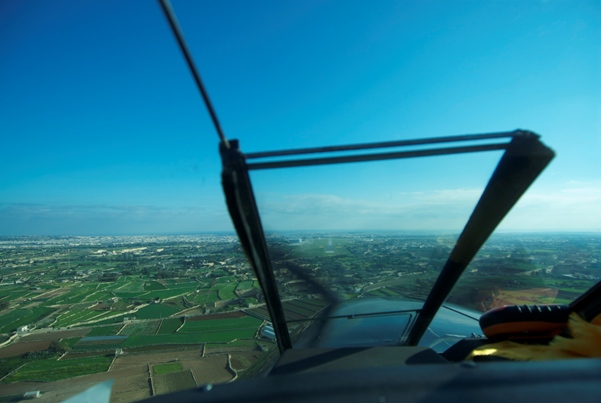
Lining up for landing in Malta, one of my favorite stops.
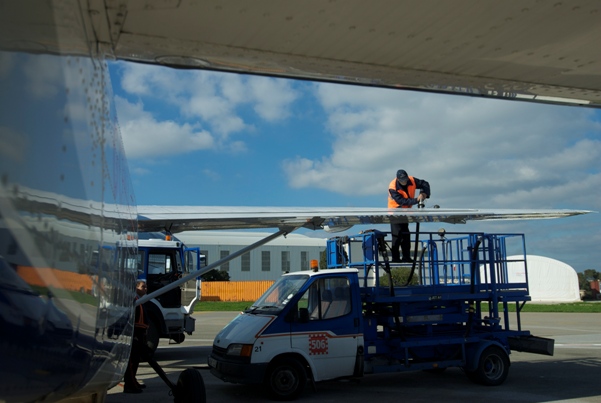
Refueling in Malta.
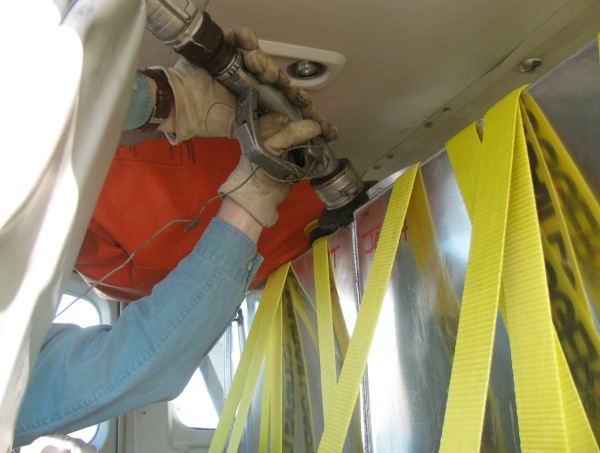
Refueling the ferry tanks.
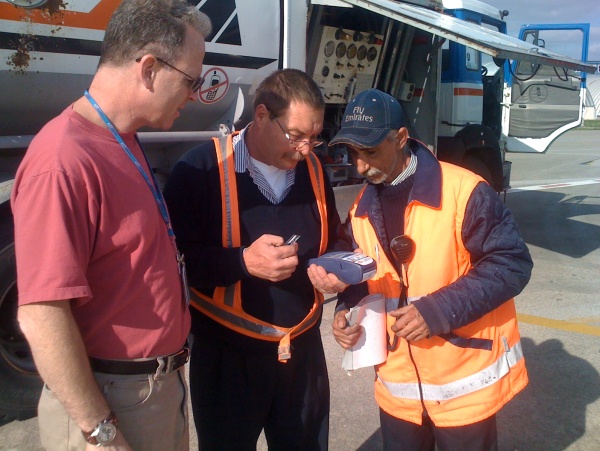
Paying the fuel bill. Fuel is the largest expense--a small increase in price drastically reduces the profit.
Loading the fuel into the ferry tanks we made one last check on the situation in Egypt. Another ferry crew had been through Luxor the night before and reported that all was well but very, very quiet. So, off we went over the blue waters of the Med. Only nine more hours to Egypt!
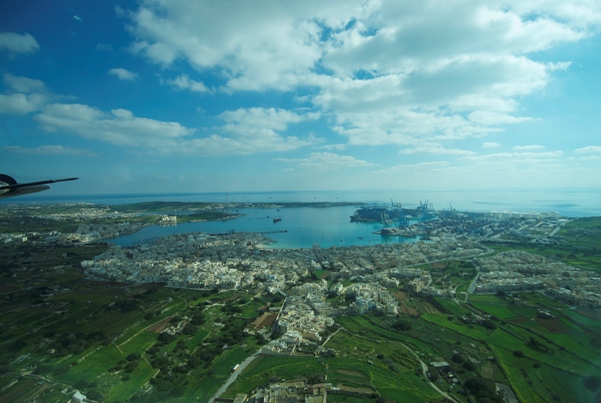
Leaving Malta for Luxor.
Feet dry at last over the DBA NDB on the Egyptian coast, the only noticeable difference this trip was the attention from Cairo ATC. With fewer jets in the air the controllers were answering radio calls on the first try! Usually it takes several tries to get any response, and often the response is “Stand by.” It was a nice change.
On the ground in Luxor the handlers were very happy to see us. With no traffic we were some welcome revenue and were treated to First Class service. In all fairness, the handlers have almost always been good in Luxor.
It wasn’t until we were walking through the international terminal that things seemed different. There were no tourists around! Luxor is normally a bustling tourist destination. Now, the terminal was eerily silent. The silence continued on the drive through town. No westerners in mule-drawn carts or walking next to the Nile. Instead there were dark streets with tanks at corners and intersections. The hotel was dark and also empty. Our driver assured us that everything was safe but that we shouldn’t leave the hotel. That seemed wise.
As with the handlers, the hotel staff was very happy to see customers, and was very nice and friendly. In the lobby there was a small crowd of Egyptians watching the news from Cairo. Mubark had just agreed to relinquish power to the military. We received some very curious looks as we carted our bags up to our rooms.
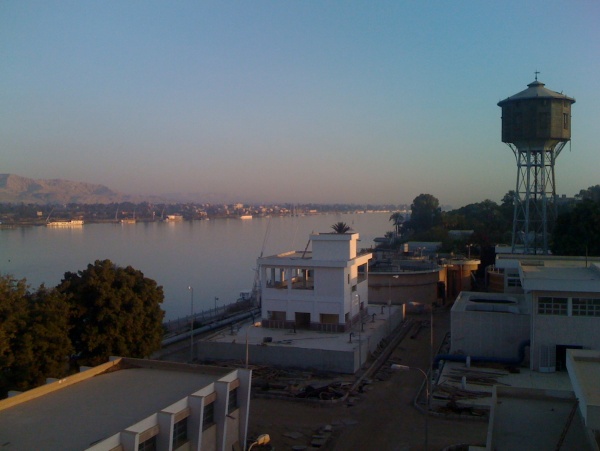
The Nile from our hotel in Luxor. All is quiet.
Eight hours later and back at the airport. With a short leg to Oman we had reduced the fuel load. No need for 14 hours of fuel when the flight should only be nine hours.
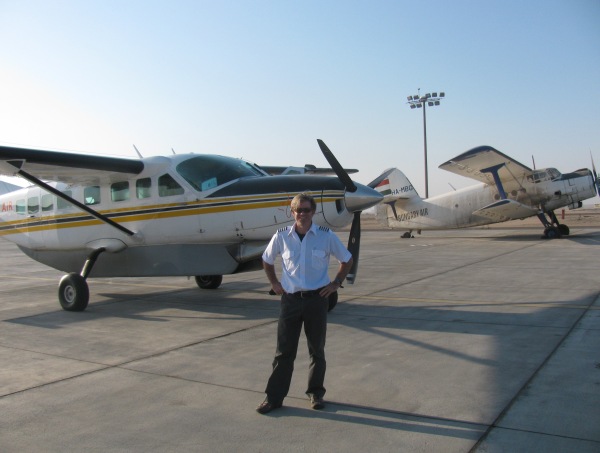
Ready to go, with Monkey Suit on. The AN-2 in the background has been stuck for several years.
So with light planes and a good night of sleep behind us we launched out over the desert. Wishing the Egyptian controllers the best of luck we flew towards the Red Sea. Feeling pretty pleased with our light Caravans and happy to have the potential problems with Egypt behind us, we hooked up for some impromptu formation flying.
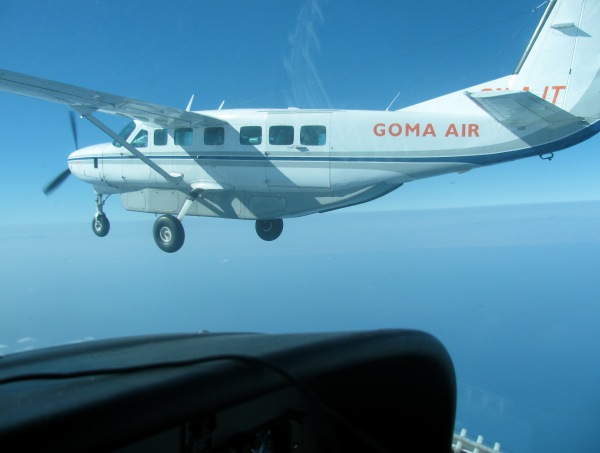
Flight of two out of Luxor.
Our cavalier attitude was soon rewarded by the Saudi Controllers. Due to military activity we were being rerouted 200 miles out of the way. Suddenly the light fuel loads weren’t as exciting. Plugging my iPod in, I left the talking to Alex as he negotiated for a better route. Many minutes later he’d hashed out a better plan: one that didn’t involve us running out of Jet-A or landing in Saudi for fuel. We droned along for another several hours, brown sand and black volcanic rock unfolding below with painful monotony. Finally, the blue waters of the Persian Gulf came into view, and with the last of the daylight we flew over the hills north of Oman and came into land as a flight of two.
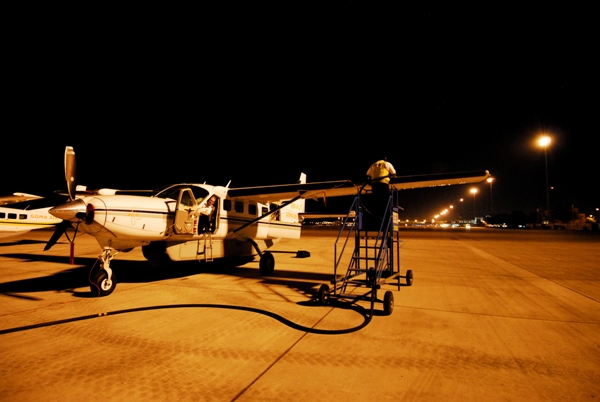
Night arrival in Oman.
We spent a day and a half in Oman, resting up by the pool and getting a little exercise in the hotel gym. As the departure time drew near Alex and I started looking at the weather and winds for the final leg into Kathmandu. The weather had been perfect for the trip so far but it looked like the weather gods were acting up around Kathmandu. Ironic since Kathmandu was going to be the most complicated approach. It was also crucial that we not land in India. Any stop in India could easily add $5,000 per plane to the cost of the trip. It was Kathmandu or bust!
We launched from Oman at 10:00 PM local. All was going well. We were cruising at 7-9,000 feet burning fuel before climbing higher when the first interesting event occurred. A coalition warship hailed us on Guard (121.5) asking who we were and what our intentions were. For 10 long minutes we couldn’t reach them, only listen. Visions of surface-to-air missiles flashed through my head along with the thought of how annoying it would be to get shot down by a US Navy ship.
Finally Alex (at 9,000 ft) managed to get through and explained who we were and what we were doing. “No problem,” a Navy controller with an American accent responded. “Just let us know if you are changing speed or altitude … and good luck.”
This was so typical for a ferry flight. Weather, winds, hassles with customs are all common. But it seems that during every delivery flight there is one incident that you would never have thought of. It keeps it fun, and sometimes a bit scary or frustrating.
Onwards towards India we flew, expecting reroutes and communication issues with ATC over India. It wasn’t until the final 200 miles that the depicted thunderstorms started to manifest. I went high to avoid the early encounters but soon the extra altitude wasn’t enough and like Alex below me I was boring on through the clouds as well. The radar was working just well enough to let us know that there were big cells ahead, but crapped out as we tried to work around them. The flashes of lightening were also good indicators. The storms got worse as Kathmandu drew near and we were both dodging a big one (in IMC) just before the initial fix … when we lost communications with ATC.
Kathmandu has a VOR DME step down approach that brings you down a narrow corridor from the south. The step downs are fairly steep and given the terrain, cheating is not a good idea. We had a few jets holding above us and I was right on top of Alex. The good news was that before we lost com Alex had been told to expect to be number one for the approach, so he could head straight in after avoiding the storm cell. I wasn’t cleared in but Alex and I were talking, so we planned for me to trail him by a mile or two. It was unlikely that ATC would clear anyone else for the approach until Alex was down. If I was right on his tail I would be well clear of the other traffic as well. With a skim of ice on one the wings, and flashes of lightning providing entertainment, we flew towards the initial fix.
Just as we reached the fix Kathmandu tower came through on the radio. It appears that during storms a nearby repeater is often disabled and you need to get in closer to reach the tower. It was reassuring to have official sanction for the approach, but in the end we stuck with our original plan. I landed shortly behind Alex to the surprise of the tower and our welcoming party.
Taxiing in we were greeted by the guys from Goma Air who had braved pouring rain to meet the first planes for their new airline.
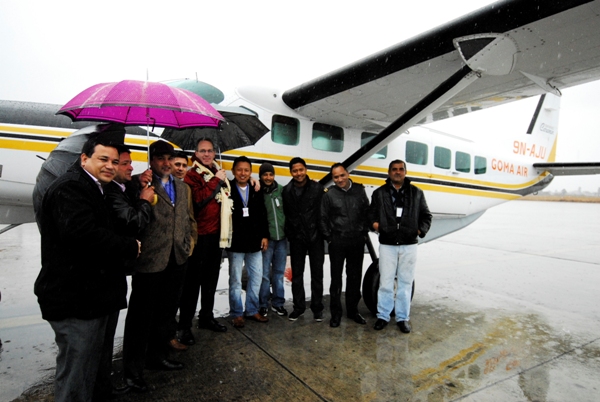
A warm welcome in Kathmandu.

Ferry flights across the pond, while challenging and frustrating, are more adventure and fun than some pilots see in a lifetime. Thanks for sharing your story. And just out of curiosity how do the bladder tanks effect weight and balance, and do you operate at increased takeoff weights?
Hi Jeff,
Thanks for your interest.
The tanks are aluminum boxes, much easier to secure, they provide a lot more gallons per square foot of floor space, or footprint, in the cabin, than bladders.
We obtain a special airworthiness permit to fly in the overweight condition, usually thirty percent over gross. Center of Gravity becomes critical, while performance just goes downhill as the weight goes up. The permit states that “The performance and stability characteristics for the overweight condition have not been evaluated.” Basically the envelopes for airspeed, altitude, climb, etc., become very narrow.
I’m not easily imprseesd. . . but that’s impressing me!
Great story. I’d love to read more.
Our first landing in Africa was also Luxor on my first business trip to Angola.
AN-2 next to Caravan is a great working bird except being critical to crosswind component.Many thanks for sharing of the ferry flight interesting report. I think you were feeling yourselves on razor edge at
Kathmandu approach
Kindest regards and good luck
Eugene
Great inspiring story!..